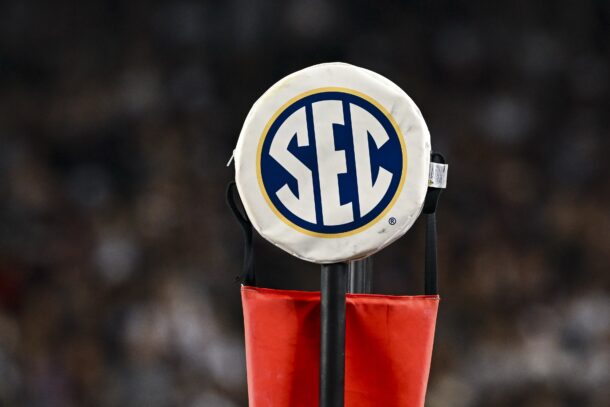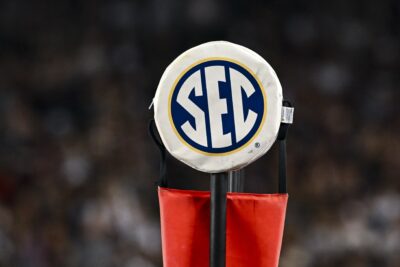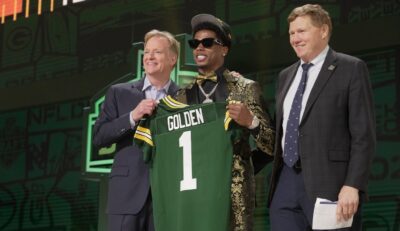Ad Disclosure

When you’re a team such as Auburn, and you’re coming off a 7-6 season like the Tigers had in 2015, there is plenty of room for improvement. But what are the most important areas of Gus Malzahn’s team that need to get better so that AU’s recent downward spiral doesn’t continue?
We’ve targeted five of those areas, and here is our list:
Pick up the pass-rush
In 13 games last season, Auburn managed just 19 sacks to finish 13th in the SEC, ahead of only Kentucky, which had 17 QB takedowns in 12 games. To put the Tigers’ total in perspective, Alabama led the SEC and the FBS with 52 sacks — albeit in 15 games — for an average of 3.47 per contest, well more than double Auburn’s average of 1.46.
Cassanova McKinzy, whose AU career is over, led the Tigers with just five sacks in 2015. Montravius Adams, who was second on the team with 2.5 sacks, is back for his senior season.
Luckily for new coordinator Kevin Steele, the line is the best — and deepest — part of Auburn’s defense. Carl Lawson — yes, we know he has to stay healthy — and Dontavius Russell join Adams as returning starters and should help the Tigers boost their sack total.
Gimel President, Devaroe Lawrence and Maurice Swain — all seniors — bring experience and leadership as reserves. And if sophomore Byron Cowart starts playing like the five-star recruit he was coming out of high school, Auburn’s sack leader in 2016 should definitely be someone other than a linebacker.
Throw for more TDs
Auburn did have more sacks than passing TDs last season, but not by much. Jeremy Johnson and Sean White combined to throw 11 scoring strikes in 2015, a total that left the Tigers tied for 11th in the SEC with Vanderbilt and ahead of only Kentucky and Missouri, which had 10 apiece.
The solution for this problem is not as easy as potentially solving Auburn’s lack-of-sacks issue. What if Malzahn goes with Johnson as his starting QB, and the senior throws six picks in the season’s first three games like he did last year?
What if Malzahn turns to White, and the redshirt sophomore performs like he did in 2015, when he threw one TD pass in 143 attempts? What if the head coach puts it all on the line and starts from scratch with newcomer John Franklin III?
Last season, the JUCO recruit played for an East Mississippi Community College team that went 8-1 with an average margin of victory of 34 points, so Franklin’s stats were not as gaudy as they could have been, especially since he had to share snaps. But he did throw for 733 yards, 7 touchdowns and 2 interceptions while rushing 43 times for 451 yards and 9 more TDs.
Far be it from us to tell Malzahn what to do regarding his starting quarterback. But can Auburn’s QB play be any worse than it was a year ago — can it?
Think about this: If Franklin starts the season under center, all he would have to do is average one passing TD per game to better Johnson and White’s combined output.
Get receivers more involved
Last season, Auburn had two players with at least 24 catches — Ricardo Louis (46) and Marcus Davis (30). For comparison’s sake, Arkansas had five.
Auburn’s lack of production from its receivers went hand in hand with poor quarterback play. But between returning wideouts and incoming recruits, someone can — and will — step up.
Davis should get help from fellow returnees Jason Smith and Tony Stevens. Ryan Davis, who rushed twice for 20 yards as a freshman last season, provides depth, and incoming frosh Nate Craig-Myers and Kyle Davis might be able to make an immediate impact.
Of course, because Malzahn hasn’t made his QB decision yet, it remains to be seen if Auburn’s passing offense will improve. Considering the current state of the Tigers’ running game, whoever ends up being the starting quarterback will face even more pressure to produce with his arm.
Shore up the secondary
The Tigers had the SEC’s fourth-worst pass defense in 2015, yielding 222.6 yards per game. Auburn was also next to last in the conference, allowing opponents to convert on third down nearly 45 percent of the time.
However, it’s not like AU doesn’t have the personnel to improve in these areas. As far as returning starters go, Rudy Ford — the Tigers’ leading tackler the last two seasons — is back for his senior season, and he’s joined by standout sophomore cornerback Carlton Davis and junior safety Tray Matthews.
Junior safeties Nick Ruffin and Stephen Roberts give Auburn depth and experience in the secondary. Plus, the Tigers could do worse than having Steele as their defensive coordinator. Look for him to find the right combinations to shut down big passing plays, particularly on third down.
Convert more third downs
Last season, Auburn finished sixth in the SEC on third downs with a conversion rate of 41 percent. But in half of the Tigers’ losses in 2015, they were glaringly bad in that situation.
Against Alabama, Auburn was only 3-of-15 on third downs. The Tigers weren’t much better against Georgia, going 4-of-14, and were even worse in their loss to Ole Miss, finishing 2-of-15.
Based on these numbers, Auburn desperately needs playmakers. And after breaking down the Tigers’ quarterback and wide receiver situations, here’s a cursory look at the Tigers’ predicament at running back. With the dismissal of Jovon Robinson, Kerryon Johnson – Auburn’s only returning back to record a carry last season – will more than likely be the team’s primary ball-carrier in 2016.
Kamryn Pettway has moved from fullback to tailback, and the addition of freshman Kam Martin, a former Baylor signee, somewhat mitigates Peyton Barber’s early departure to the NFL as well as Roc Thomas’ decision to transfer to Jacksonville State. All Auburn’s running backs need to know now is whose handoffs they’ll be taking.
Stan Chrapowicki is a contributing writer for Saturday Down South. He covers SEC football, Alabama and Auburn.



